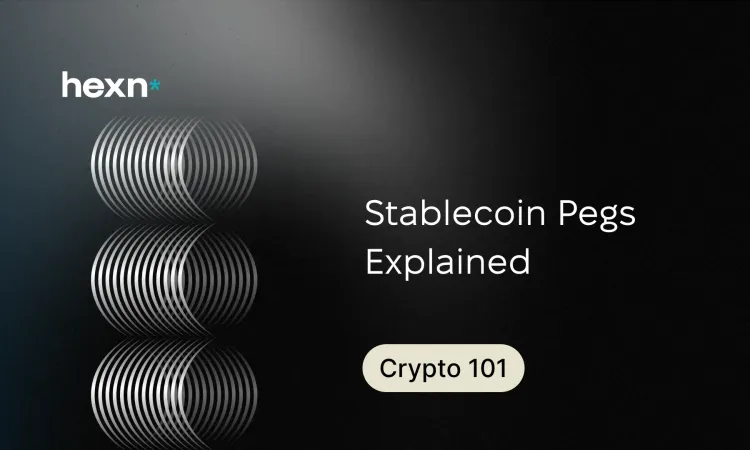Stablecoin Pegs Explained
What Is Stablecoin Peg?
Stablecoins are cryptocurrencies designed to hold a steady value by tying themselves to an external reference, most often a fiat currency. That link, known as a peg, is central to why people use stablecoins for trading, payments, and as a perceived safe place during market volatility. When a peg breaks, the effects can ripple across markets and projects.
Collateral vs Algorithmic Systems
Stablecoins use different methods to stay near their target price. Broadly, these methods fall into two groups: those backed by assets and those governed by automated rules. Each approach has tradeoffs in transparency, liquidity, and failure modes.
Types of Collateralized Stablecoins
Collateralized stablecoins are supported by reserves that are meant to cover the tokens in circulation. The reserves can take several forms:
- Fiat-collateralized: Tokens are backed by bank deposits or cash equivalents. Ideally every token can be redeemed for the underlying fiat currency, which helps keep the price stable.
- Crypto-collateralized: These use other cryptocurrencies as collateral, often with overcollateralization to absorb price swings. The extra collateral acts as a buffer against volatility.
- Commodity-collateralized: Some stablecoins are tied to tangible assets like gold, giving holders exposure to the commodity while aiming to preserve value.
Important note: Reserve claims vary in transparency and auditability. Users should not assume full backing without evidence and should consider the liquidity and custodial arrangements behind the reserves.
How Algorithmic Stablecoins Hold Their Pegs
Algorithmic stablecoins, also called non-collateralized, rely on smart contracts and algorithms to expand or contract supply according to demand. When the price slips below the target, the protocol attempts to reduce supply to raise the price; when the price exceeds the peg, it issues more tokens to bring the value down. This mechanism can be elegant, but it depends on market confidence and can break under stress.
What Is Depegging?
A depegging occurs when a stablecoin trades consistently away from its intended reference price. Because many traders and systems use stablecoins as a proxy for fiat, a prolonged depeg can cause liquidity shortages, force forced liquidations, and produce wider market stress. In severe cases, contagion may affect unrelated projects that relied on the stablecoin.
Notable Depegging Cases
Studying past incidents highlights how different designs and external shocks can undermine a peg.
May 2022: TerraUSD and the Crypto Contagion
In 2022, an algorithmic stablecoin lost its peg and triggered a rapid collapse in its ecosystem, which included its sister token that had previously been among the top cryptocurrencies by market value. The event wiped out large market value, created panic among counterparties, and showed how intertwined tokens and leverage can accelerate a crash.
March 2023: Bank Failures and the Impact on Reserve-Backed Coins
When several regional banks failed, a top fiat-backed stablecoin revealed that a substantial portion of its cash reserves had been held at one of those institutions. That exposure caused a sudden drop in the stablecoin's price as users rushed to redeem, and it also affected other coins that held that stablecoin as collateral. The episode underscored the risk of concentrated banking relationships and the need for diversified, liquid reserves.
October 2023: Tokenized Real Estate and Liquidity Mismatches
A USD-pegged coin that relied on tokenized real estate and another stablecoin as collateral faced a wave of redemption requests that quickly exhausted its liquid reserves. Much of the remaining collateral was illiquid and difficult to convert quickly because it used a non-fungible token standard that does not lend itself to rapid fractionalization. The result was a liquidity crunch and loss of confidence, demonstrating the danger of pairing illiquid assets with immediate redemption obligations.
Practical Risk Checks
To reduce exposure to stablecoin failures, consider these checks before relying on any token:
- Reserve transparency: Look for regular, independent attestations or audits that detail the composition and location of reserves.
- Liquidity profile: Prefer reserves that can be converted quickly without large price impact during stress events.
- Concentration risk: Check whether reserves or custodial relationships are concentrated in a single bank, asset, or counterparty.
- Redemption mechanics: Understand how and how fast tokens can be redeemed for underlying assets, and whether there are limits or delays.
- Protocol design: For algorithmic solutions, examine the incentives, governance, and historical performance under market stress.
Final Thoughts
Stablecoins play a vital role in digital markets, but their safety depends on design choices, reserve quality, and external conditions. Learning how a stablecoin maintains its peg and where its risks lie can help you make more informed decisions and reduce surprise during market disruptions.
